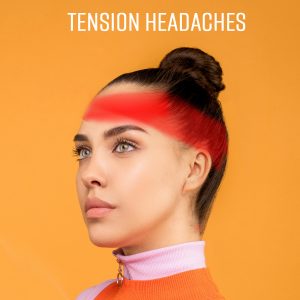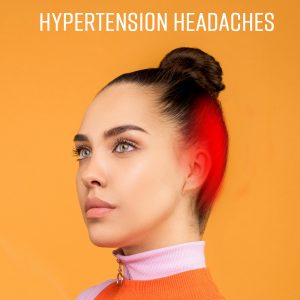Are Headaches & Migraines Disrupting Your Life?
Headaches and migraines can range from mildly annoying to completely debilitating. They interfere with daily activities, productivity, and overall well-being. While traditional treatments focus on managing symptoms, kinesiology takes a holistic approach—identifying underlying imbalances and restoring harmony in the body.
In this article, we’ll explore different types of headaches, their potential causes, and how kinesiology can support you in reducing their frequency and intensity.
What is a Migraine?
A migraine is a neurological condition that causes severe, throbbing pain, usually on one side of the head. It can last anywhere from a few hours to several days and is often accompanied by symptoms such as:
- Nausea and vomiting
- Sensitivity to light, sound, and smells
- Visual disturbances (auras)
- Dizziness and fatigue
Migraines are more than just headaches—they are a complex condition that can significantly impact daily life.
What Causes Migraines?
The exact cause of migraines isn’t fully understood, but they are believed to be influenced by both genetic and environmental factors. Common triggers include:
- Hormonal fluctuations – Many women experience migraines due to changes in estrogen levels, particularly around menstruation, pregnancy, or menopause.
- Stress & emotional triggers – Anxiety, tension, and emotional trauma can contribute to migraines.
- Dietary factors – Certain foods and drinks (such as caffeine, alcohol, processed foods, and artificial additives) may trigger migraines in some people.
- Dehydration & nutritional imbalances – Lack of essential nutrients or hydration can disrupt brain function, leading to migraines.
- Sleep disturbances – Too little or too much sleep can trigger migraine attacks.
- Sensory overload – Bright lights, loud noises, and strong smells can trigger migraines in sensitive individuals.
- Structural imbalances – Poor posture, neck tension, and jaw misalignment (such as TMJ dysfunction) can contribute to migraine pain.
Common Types of Headaches
Tension Headaches
The most common type of headache, often caused by:
- Poor posture
- Muscle tension
- Stress
- Structural imbalances
Cluster Headaches
These are severe headaches that:
- Usually occur on one side of the head
- Come in cycles or “clusters”
- May be triggered by alcohol, strong smells, or certain medications
Migraine Headaches
Migraines are neurological and can be highly debilitating. Symptoms include:
- Throbbing or pulsating pain, often on one side
- Sensitivity to light, sound, and smells
- Nausea and vomiting
- Worsening with physical activity
Sinus Headaches
Often mistaken for migraines, these headaches are:
- Localized around the sinuses
- Accompanied by congestion, watery eyes, and seasonal allergies
Hypertension Headaches
Linked to high blood pressure, these headaches feel like:
- A tight band around the head
- Increased pain with sudden spikes in blood pressure
Other Common Headache Triggers
- Hormonal fluctuations – Often linked to menstrual cycles or contraceptives
- Caffeine withdrawal or overconsumption – Can lead to headaches behind the eyes
- Exertion headaches – Caused by intense physical activity and increased venous pressure
- Eye strain – Can lead to dull pain and a heavy sensation around the eyes
How a Kinesiology Session with Me Can Help with Headaches and Migraines
If you’re struggling with headaches or migraines, I know how debilitating they can be. They can stop you in your tracks, drain your energy, and make even the simplest tasks feel overwhelming. But the good news is that kinesiology can offer real, lasting relief by addressing the root causes of your pain—whether they’re physical, emotional, biochemical, or energetic.
Understanding the Root Causes
In my kinesiology sessions, I don’t just look at the symptoms; I explore why your headaches or migraines are happening in the first place. Each person is unique, and headaches can stem from a variety of sources, including:
- Muscle Tension & Postural Issues – Tension in the neck, shoulders, and jaw can contribute to headaches. I use muscle testing to identify imbalances and help release tension through gentle techniques that relax and realign the body.
- Pelvic Misalignment & Referred Imbalances – Many people don’t realize that the pelvis plays a foundational role in overall posture and alignment. When the pelvis is out of balance, it can create a domino effect of tension that travels up the spine, leading to imbalances in the neck and head. This can result in headaches, jaw tension, and even eye strain. By assessing and correcting pelvic alignment, we can help reduce the structural stress contributing to your headaches.
- Emotional & Stress Triggers – Unresolved emotions and stress are major culprits in chronic headaches. Through kinesiology, I can help uncover and clear emotional patterns that may be triggering or worsening your headaches.
- Hormonal Imbalances – If your headaches are linked to your menstrual cycle or menopause, kinesiology can help balance your hormones naturally by working with the body’s energy systems.
- Digestive & Nutritional Factors – Food intolerances, dehydration, and nutritional deficiencies can all play a role in migraines. I use muscle testing to assess how your body responds to certain foods and whether nutritional support is needed.
- Toxicity & Environmental Sensitivities – Chemicals, fragrances, and even electromagnetic frequencies can trigger headaches for some people. I can help identify possible sensitivities and support your body’s detoxification pathways.
- Energetic Imbalances – Sometimes, headaches are caused by blocked energy flow in the body. Using techniques like acupressure, meridian balancing, and chakra alignment, I help restore harmony to your energy system.
What to Expect in a Session
When you come to me for a kinesiology session, we’ll start by discussing your symptoms, lifestyle, and any patterns you’ve noticed with your headaches. Then, I’ll use muscle testing—a gentle and non-invasive technique—to communicate directly with your body and pinpoint imbalances.
Once we’ve identified the underlying causes, I use a combination of techniques tailored specifically to you. These might include:
- Gentle Structural Corrections – Helping to release tension in the neck, shoulders, and jaw, as well as correcting pelvic imbalances to ease structural stress that may be contributing to headaches.
- Emotional Stress Release – Working through past or present emotional triggers that might be contributing to your headaches.
- Acupressure & Meridian Balancing – Activating key energy points to promote better circulation and reduce pain.
- Nutritional & Lifestyle Recommendations – Suggesting foods, hydration strategies, or supplements that may help prevent future headaches.
- Breathing & Relaxation Techniques – Teaching you ways to calm your nervous system and reduce headache frequency.
The Deeper Impact
Kinesiology is more than just symptom relief—it’s about transformation. By addressing the deeper imbalances behind your headaches, we create a ripple effect of positive change in your body and mind. Clients often tell me that not only do their headaches improve, but they also experience better sleep, more energy, improved mood, and a deeper sense of well-being.
If you’re ready to take control of your headaches and migraines in a natural, holistic way, I’d love to support you on your journey. Let’s work together to bring your body back into balance so you can feel clear, calm, and pain-free.
Take the Next Step Toward Healing
Pain shouldn’t hold you back from living your best life. If headaches or migraines are stopping you from reaching your potential, book a kinesiology session today!
Book a Session Now
Explore More Benefits of Kinesiology
Kinesiology can help with a variety of health and well-being challenges. Discover how it can support you in feeling balanced, energized, and aligned.
Disclaimer: Be Your Potential Kinesiology does not provide medical advice, diagnosis, or treatment. Always consult a healthcare professional for medical concerns







